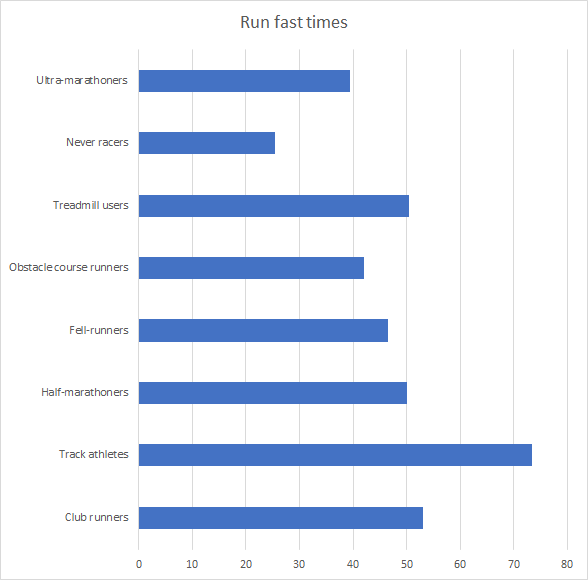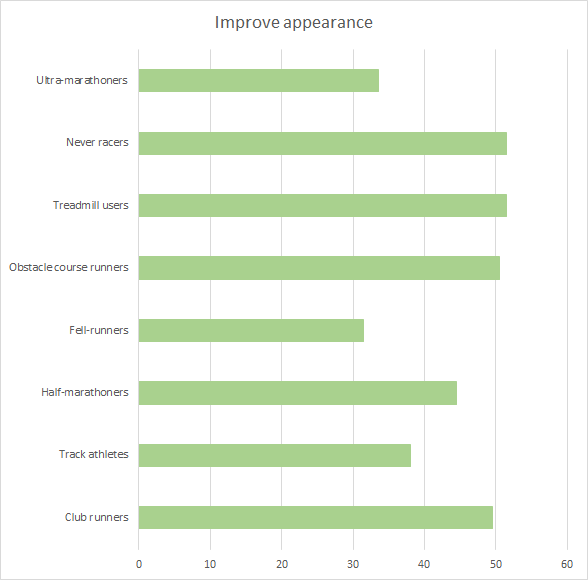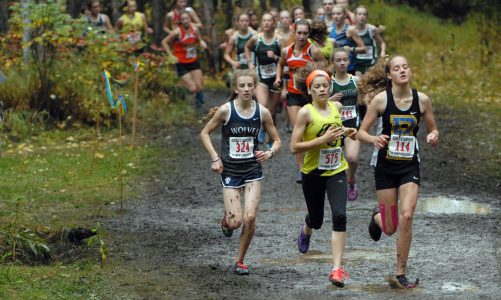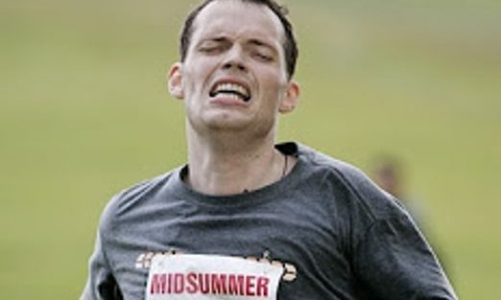One of the things I’ve found interesting in studying running is the diversity hidden beneath the sport’s surface.
To someone who is unfamiliar with running, a fell-runner, a marathoner, a jogger and perhaps even a track athlete, might all seem to be part of one homogenous group. But for those familiar with running culture, the differences between them are clear – and are often actively marked and emphasised by runners themselves.
In this post I’m going to quantify some of these differences using data from my own Big Running Survey.
The charts below compare key motivational characteristics of a handful of types of running. I’ve selected four types of motivation to focus on: Running fast times, improving appearance, exploring the outdoors and socialising with others.
The motivation scores are the means of the rank scores provided by respondents, converted into percentages. Note that categories for types of runner are not mutually exclusive – the same runners can appear in multiple categories if they participate in more than one form.
Motivation: Running fast

Motivation: Improving appearances

Motivation: Explore the outdoors

Motivation: Socialising

Bear in mind that the running type categories are not mutually exclusive, and that motivational scores reflect individuals’ overall motivational orientation to running, not just to running in a particular way. This helps explain why treadmill users, for instance, report quite high levels of motivation for exploring outdoors: Lots of exploring motivated runners who run lots outside also use treadmills regularly, so are included in the treadmill category along with their outdoor form.
If it was possible with the data to look at how different types of running fulfilled each motivation directly, no doubt the motivational differences between ways of running would be even larger. But even these slightly watered down differences demonstrate how different forms of running cater to quite different sets of needs, which – as I will explore in a later post – reflect the demographic differences between the forms.



